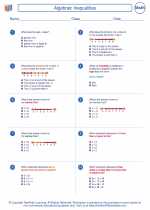Exosphere
The exosphere is the outermost layer of the Earth's atmosphere. It extends from the top of the thermosphere to the edges of space. This region is where the Earth's atmosphere gradually merges with outer space. The exosphere is composed of very low-density gases such as hydrogen, helium, and small traces of heavier gases like oxygen and nitrogen. The density of the exosphere is so low that the gases in this region rarely collide with each other.
Key Characteristics of the Exosphere:
- Outermost layer of the Earth's atmosphere
- Transition zone between Earth's atmosphere and outer space
- Consists of very low-density gases
- Gases are sparsely distributed and rarely collide
Study Guide
When studying the exosphere, it's important to understand the following key concepts:
- Composition: Learn about the types of gases present in the exosphere and their relative abundance.
- Transition to Space: Understand how the exosphere marks the boundary between Earth's atmosphere and outer space, and how the density of gases changes in this region.
- Importance: Explore the role of the exosphere in protecting the Earth from solar radiation and how it impacts satellite orbits.
- Collisions: Investigate why gas particles in the exosphere rarely collide with each other and how this affects the behavior of gases in this region.
By mastering these concepts, you will gain a comprehensive understanding of the exosphere and its significance in the Earth's atmosphere and beyond.
.◂Math Worksheets and Study Guides Seventh Grade. Algebraic Inequalities
Study Guide Algebraic Inequalities
Algebraic Inequalities  Worksheet/Answer key
Worksheet/Answer key Algebraic Inequalities
Algebraic Inequalities  Worksheet/Answer key
Worksheet/Answer key Algebraic Inequalities
Algebraic Inequalities  Worksheet/Answer key
Worksheet/Answer key Algebraic Inequalities
Algebraic Inequalities 

 Worksheet/Answer key
Worksheet/Answer key
 Worksheet/Answer key
Worksheet/Answer key
 Worksheet/Answer key
Worksheet/Answer key

The resources above cover the following skills:
Algebra (NCTM)
Represent and analyze mathematical situations and structures using algebraic symbols.
Use symbolic algebra to represent situations and to solve problems, especially those that involve linear relationships.